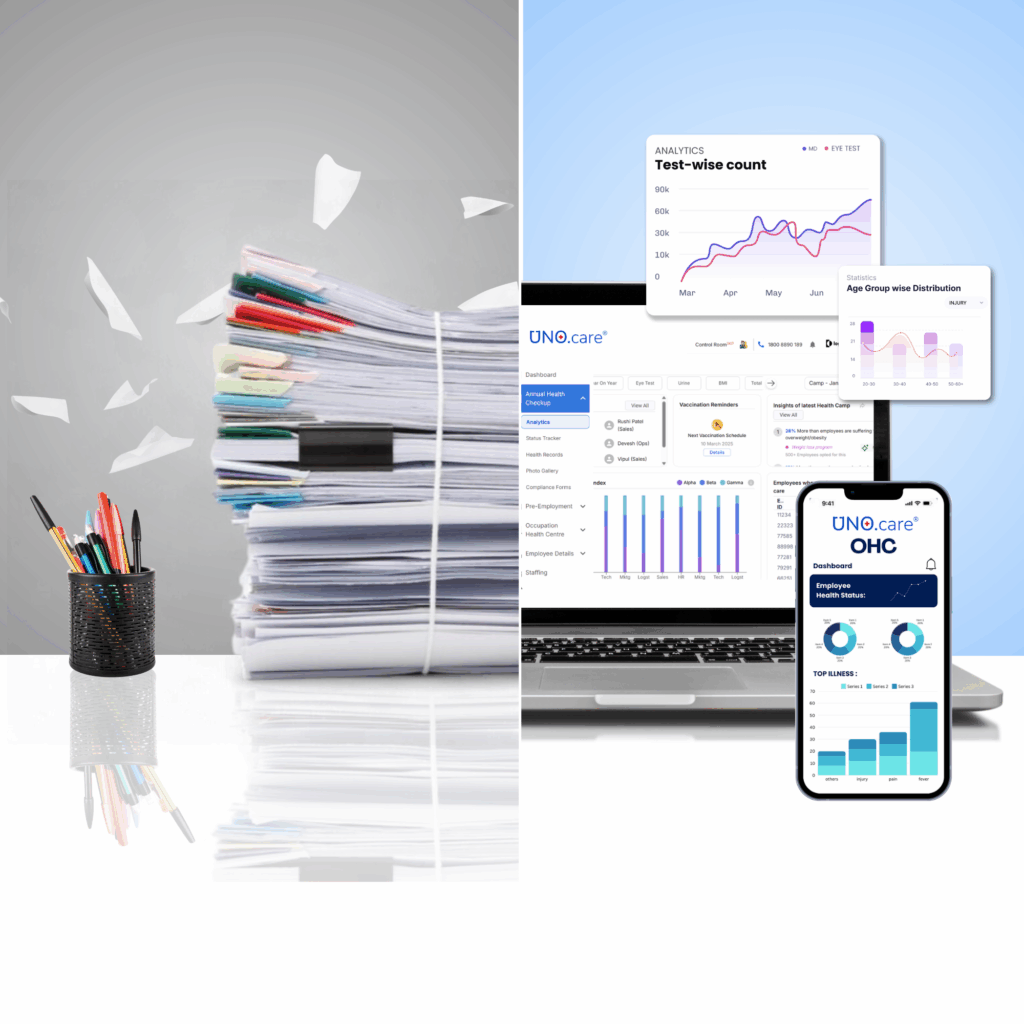
In too many factories, OHC management still runs on Excel spreadsheets. At first glance, spreadsheets seem efficient. But in reality, they are a ticking compliance time bomb.
The Spreadsheet Trap
- Error-Prone: Manual entries lead to mistakes.
- Non-Compliant: Auditors don’t accept spreadsheets as valid health records.
- No Analytics: Excel shows data, not trends.
- No Security: Files can be altered or lost.
The Case for Smart OHC Systems
Digital platforms transform OHCs by:
- Automating Checkup Scheduling: No worker is missed for periodic tests.
- Centralizing Records: Multi-plant data is accessible in one dashboard.
- Ensuring Audit Readiness : AI-validated records impress inspectors.
- Generating Actionable Insights: Leaders see disease trends, risk zones, and workforce health scores.
Real-World Impact
A chemical factory in Maharashtra shifted from Excel to a digital OHC platform. Within one year:
- Compliance audit clearance time dropped by 65%
- Leadership identified an overlooked dust-related illness trend
- Worker confidence in management improved significantly
Why Leaders Must Act Now
Sticking to spreadsheets may seem “cheaper,” but the hidden costs of penalties, accidents, and lost productivity far outweigh investments in smart systems.
Conclusion
Excel belongs in accounting, not health management. To protect employees and safeguard compliance, industries must upgrade OHCs to smart digital systems.
